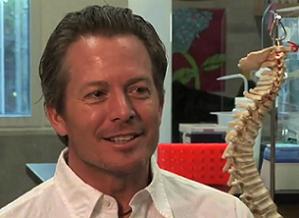
Special teams trained
After many delays, Geron finally persuaded the Food and Drug Administration last July to allow the company to study 10 patients. Geron spent months training special teams of doctors at seven secret sites around the country so that they could be ready to act quickly. The teams then had to wait for a patient who met the study’s strict criteria — someone who had been paralyzed from the chest down within the previous two weeks.
Surgeons planned to use specially designed equipment to infuse into the first patient’s spine about 2 million “oligodendrocyte progenitor” cells, which Geron scientists had created in the laboratory from embryonic stem cells obtained from days-old embryos left over from fertility treatments. The hope is that the cells will form a restorative sheath around the damaged spinal cord. In tests in hundreds of rats, partially paralyzed animals regained the ability to move, according to Geron.
The study is being closely monitored by scientists eager to advance the research from the laboratory to the clinic, as well as by patients and patient advocates hoping for cures. Although the cells have been tested in animals, and some clinics around the world claim to offer therapies using human embryonic stem cells, the trial is the first vetted by the FDA to evaluate the strategy in people.
But in addition to being criticized by those citing moral objections to research using the cells because human embryos are destroyed to obtain them, the study has also raised alarm among some proponents of the research. Some argue that the experiment is premature. Others question whether it is ethical. Many fear that the trial risks becoming a major step backward if anything goes wrong, such as the cells causing tumors, or if there is no sign that the cells help.
Spinal cord injuries are also highly unpredictable. Patients often improve on their own, which makes gauging whether the cells had any effect dicey. Some also wonder whether trauma victims who have so recently suffered a life-altering injury might agree to the experiments out of desperation without fully understanding the risks.
Supporters say they are confident that the study had been adequately vetted. The FDA demanded extensive experiments in the laboratory and on animals to provide evidence that the cells hold promise and are safe to test in people. Even if problems occur, research shows that the cells do not leave the site of the injury, indicating patients would not experience negative effects, Geron said. Each subject is assigned an independent advocate to ensure that volunteers fully understand their decision.
Neither Timothy Atchison nor any of his family members would discuss his decision-making process, saying he was working with a family friend to tell his story in a book.
“I just met with my literary agent. We’re trying to figure out what’s in my best interest to talk about right now,” he said.
On her blog, the family friend, Tory Minus of Millry, recounted Atchison’s experience.
“Almost six months ago, my mom called shortly before 8 o’clock on a Saturday morning to tell me that a close family friend named Timothy (or T.J., as most refer to him) was involved in a terrible automobile accident,” Minus wrote. “Mom could barely get the words out. T.J. had suffered a severe injury to his spinal cord and was being air-ambulanced to a regional medical center some 60 miles away.”
APR
2011
